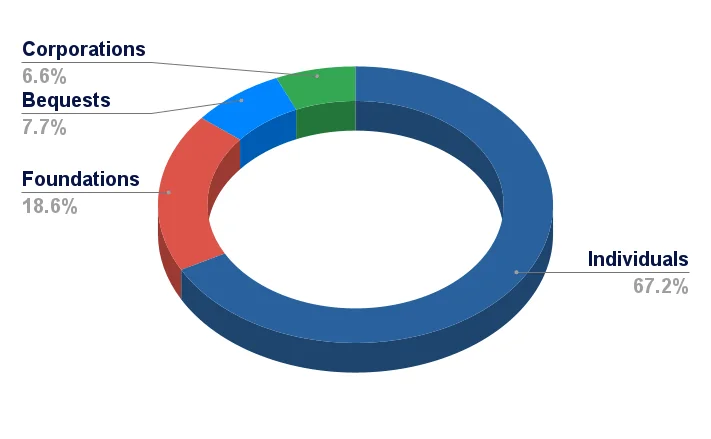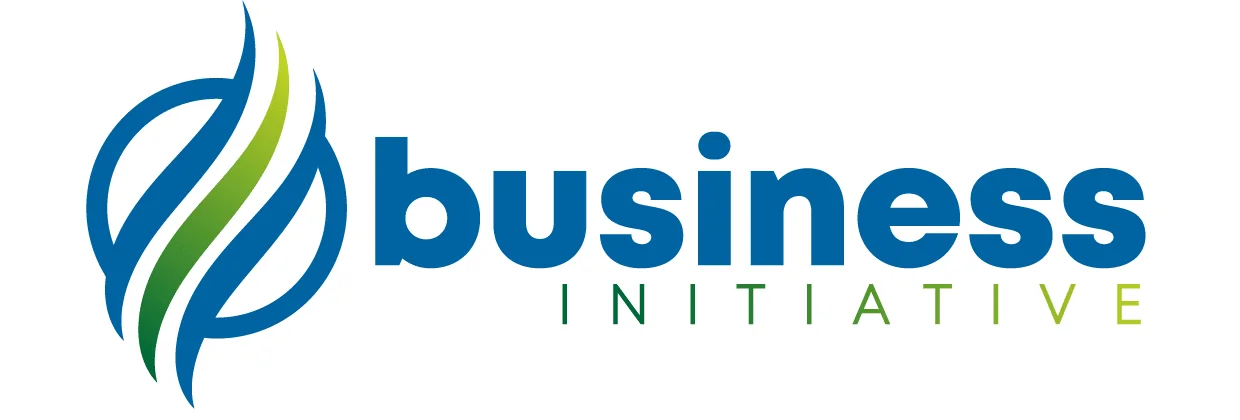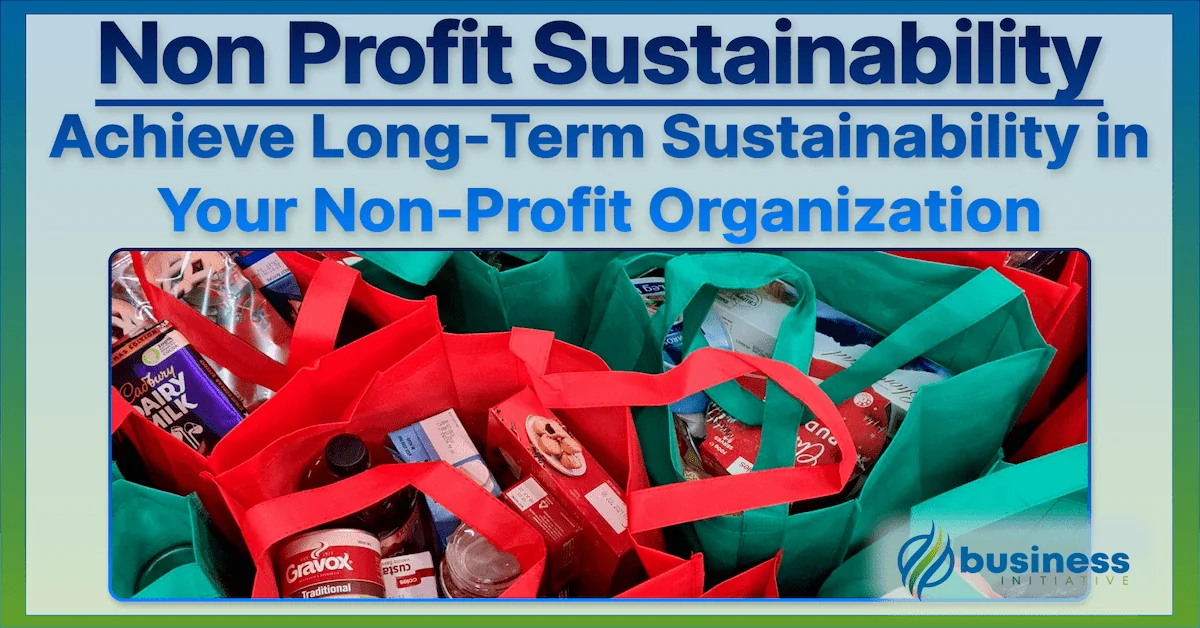Nonprofits play a crucial role in the global economy.
In the United States alone, the nonprofit sector is the third-largest employer, with over 1.48 million active 501(c)(3) organizations.
These organizations drive change, create jobs, and address societal needs.
Globally, nonprofits continue to grow, creating significant social and economic impact.
 Key Takeaways
Key Takeaways
- Nonprofits should diversify revenue streams—donations, grants, earned income—to ensure financial stability and long-term success.
- Strong community engagement and volunteer involvement are crucial for nonprofit longevity and sustainability.
- Effective financial management and transparent governance attract more funding and strengthen donor trust.
- Nonprofits can generate surplus revenue, reinvesting it in growth and mission-critical programs.
- Leveraging technology and digital platforms helps nonprofits expand their reach, increase donations, and improve operational efficiency.
This article explores the longevity, profitability, and growth potential of nonprofits.
We will discuss how nonprofit owners are compensated, their sustainability strategies, and the revenue streams that fuel their success.
Whether leading a nonprofit or starting one, these insights can help you make a lasting impact.
 Table of Contents
Table of Contents
We’ll cover how nonprofits maintain profitability while achieving their mission, examining compensation methods, sustainability strategies, and revenue sources—such as donations, grants, and earned income—that help nonprofits thrive.
The Longevity of Nonprofit Organizations

1. Defining Longevity in the Nonprofit Sector
Longevity in the nonprofit sector goes beyond survival; it’s about sustaining impact, financial stability, and community relevance.
It reflects a nonprofit’s ability to fulfill its mission while adapting to changing conditions.
Key indicators include years in operation, sustained impact, and diversified funding.
Nonprofits that focus on scalability while maintaining strong community ties can thrive for decades, proving their resilience through economic cycles, social changes, and leadership transitions.
2. Statistical Analysis of Nonprofit Longevity
Studies show that 30% of nonprofits fail to last beyond 10 years, while many successful ones have operated for over 50 years.
The longevity of nonprofits often hinges on leadership, community engagement, and diversified funding.
Visionary leaders who prioritize mission alignment and financial health enable their organizations to navigate challenges.
According to the National Council of Nonprofits, nonprofits with diversified funding—grants, donations, earned income—are more likely to survive long-term, unlike those reliant on a single source.
Community support is also essential.
Organizations with strong volunteer networks and local partnerships tend to have greater longevity, benefiting from financial backing and active advocacy.
Local foundations often prioritize organizations with proven success, offering additional financial stability.
Real-World Examples of Non-Profit Longevity
Habitat for Humanity, founded in 1976, exemplifies longevity.
The nonprofit has grown globally, helping over 59 million people improve their homes.
Its success stems from a clear mission, dedicated volunteers, and diversified funding, including donations and Habitat ReStores.
The American Red Cross, founded in 1881, showcases adaptability by evolving its services—disaster relief, blood donations, emergency preparedness—while maintaining its mission.
Their century-long operation demonstrates the importance of strategic leadership, strong volunteer engagement, and financial resilience.
These examples highlight the importance of community ties, visionary leadership, and financial flexibility in ensuring long-term nonprofit success.
Profitability in Nonprofit Organizations

1. Understanding Profitability in the Nonprofit Context
Nonprofits exist to fulfill a mission, not to generate profit for owners or shareholders.
However, they can and should generate surplus revenue.
Unlike for-profit companies, any surplus is reinvested into the organization to support its mission and programs.
This surplus is crucial for growth, expansion, and sustainability, allowing nonprofits to invest in new initiatives, upgrade technology, and improve services.
Financial stability enables nonprofits to scale their impact and continue serving their communities over time.
➤ MORE: Learn practical steps to ensure your Nonprofit has enough money to grow.
2. Key Revenue Streams for Nonprofits
Nonprofits rely on diverse revenue streams to maintain financial health and reduce dependency on a single source of income.
- Donations and Grants
Donations, particularly from individuals, made up 67.2% of charitable giving in the U.S. in 2023.
Grants from government and private foundations provide additional critical funding.
Monthly giving rose 11% and accounted for one-third of online giving.
57% of nonprofit website traffic came from mobile and tablet devices, but 75% of revenue came from users on desktop devices.
- Membership Fees
Organizations like museums and professional associations generate steady revenue through annual membership fees, fostering a dedicated community of supporters.
For more insights, visit MemberClicks.
- Service Fees and Product Sales
Nonprofits like Goodwill Industries generate revenue through services and product sales, with 81% of the Goodwill network’s collective revenue revenue is put into mission services programs in 2022.
- Investments and Endowments
Nonprofits with large assets, such as universities, build endowments to generate income.
Harvard University, for example, has a $50.7 billion endowment, ensuring long-term financial security.
3. Data-Driven Insights on Nonprofit Profitability
According to the Nonprofit Finance Fund, 85% of nonprofits reported breakeven or better financial results in 2021.
Large nonprofits, like the YMCA, generated $202.31 million in revenue in 2023.
Nonprofits that manage finances well and reinvest in their mission achieve sustainable profitability, ensuring long-term success in serving their communities.
Growth Strategies for Nonprofit Organizations

1. Growth Metrics and Indicators
Nonprofit growth extends beyond revenue to include impact and reach.
Key metrics are service expansion, donor base growth, and geographic outreach.
Additionally, increased program participation, new initiatives, and partnerships can signal growth.
For example, a growing donor base and more volunteers reflect long-term sustainability and community engagement.
Tracking these over time helps allocate resources effectively.
2. Effective Growth Strategies
Nonprofits that experience sustained growth often diversify revenue, use technology, and build strong donor relationships.
- Diversifying Revenue Streams
Organizations with varied income sources—donations, grants, memberships, services, and product sales—are more resilient.
Charity: Water, for instance, funds itself through private donors, corporations, and a membership program, The Spring, which brings in monthly donations.
- Leveraging Technology and Social Media
Technology expands reach and efficiency.
Nonprofits using social media and tools like Givebutter for fundraising and engagement can boost visibility and donations.
Data analytics helps track performance and optimize outreach.
- Building Strong Donor Relationships
xFostering long-term donor relationships is crucial.
With a standard Donor Retention Rate of 45%, nonprofits that engage donors personally and show appreciation typically grow more sustainably.
3. Statistical Evidence of Successful Growth
Nonprofits applying these strategies see substantial growth.
Feeding America grew its donor base through corporate partnerships and technology like MealConnect, providing over 5.3 billion meals in 2023.
St. Jude Children’s Research Hospital raised over $3.3 billion in 2023 by focusing on recurring donations, celebrity endorsements, and targeted marketing.
By diversifying income, leveraging technology, and strengthening relationships, nonprofits can sustainably grow their operations and impact.
Leaders should track engagement, donations, and reach to guide strategy.
How do Nonprofit Owners Get Paid?

1. Compensation Structures in Nonprofits
Nonprofit leaders, including executives and founders, receive compensation for their work despite the organization’s mission-driven nature.
Unlike for-profit companies, nonprofit compensation focuses on fair pay for services rendered, aligned with responsibilities and outcomes.
Compensation typically combines salary and performance-based incentives.
Some leaders may earn competitive pay, while others may opt for lower salaries to reflect the mission.
Nonprofits often use tools like Guidestar to ensure leader compensation aligns with industry standards.
They benchmark against similar organizations based on size, sector, and location, ensuring a balance between fair pay and directing resources toward the mission.
2. Nonprofit Executive Compensation Statistics
Compensation varies by organization size, location, and type.
Nonprofit boards are responsible for setting executive compensation that is reasonable, not excessive, and sufficient to attract top talent.
The process should involve an independent review of compensation data from similar organizations in the same region, with the findings documented in board meeting minutes and IRS Form 990 filings.
According to 2022 data from Candid, the median U.S. nonprofit CEO salary is around $153,000, with leaders of larger organizations, especially in sectors like science & technology research, earning over $200,000 annually.
Transparency in compensation has increased, with tools like ProPublica’s Nonprofit Explorer allowing stakeholders to track fund allocation, boosting trust and accountability in the sector.
To ensure fairness, a compensation review should be conducted annually and consider all aspects of executive pay, including benefits.
3. Benefits of Fair Compensation
Competitive salaries are essential for attracting and retaining skilled nonprofit leaders.
Fair compensation ensures leadership continuity, reduces costly turnover, and strengthens organizational sustainability.
Graham-Pelton study showed nonprofits with competitive pay had higher retention and leadership satisfaction.
Moreover, fair pay signals to donors and partners that the organization invests in strong leadership, enhancing trust and long-term success.
Sustainability of Nonprofit Organizations

What is Non-Profit Sustainability?
Sustainability in nonprofits goes beyond financial stability—it’s about creating long-term impact while maintaining sound financial, operational, and environmental practices.
- Financial sustainability involves reliable, diversified income to cover expenses and reinvest in programs.
- Operational sustainability ensures efficient processes, staffing, and resources align with the mission.
- Environmental sustainability considers the broader implications of the organization’s activities.
Prioritizing sustainability helps nonprofits build resilience against economic fluctuations, donor behavior shifts, or political changes, allowing them to plan confidently, innovate, and expand their reach.
By prioritizing these areas of your non-profit, you can join the 63% of nonprofits operating in a surplus have positive margins.
Best Practices for Achieving Sustainability
1. Financial Management and Budgeting Strategies
Good financial management is key to sustainability.
Nonprofits should implement robust budgeting processes and use tools like QuickBooks and Sage Intacct for tracking income, expenses, and cash flow.
Diversified funding is crucial, as reliance on individual donations increases financial strain.
Larger organizations with diversified revenue tend to perform better, while smaller ones struggle.
Diversifying revenue streams—grants, donations, earned income, and corporate partnerships—creates financial resilience.
2. Building Strong Community and Stakeholder Relationships
67% of donors are nonprofit volunteers.
Community support also plays a vital role in long-term sustainability.
Strong local ties, volunteer involvement, and donor engagement help nonprofits weather financial challenges and continue operations.
Engaging local communities and involving stakeholders strengthens nonprofits.
Effective donor engagement improves retention rates, critical for long-term sustainability.
3. Implementing Effective Governance and Accountability Measures
Strong governance ensures alignment with mission and transparency.
Clear board roles, ethical standards, and regular audits enhance accountability.
Effective governance attracts more funding by demonstrating transparency.
By focusing on financial health, relationships, and governance, nonprofits can build a foundation for long-term sustainability.
How do Nonprofits Make Money?

-
Diverse Revenue Streams
Nonprofits rely on diverse income sources, reinvesting surplus into their mission.
Common revenue streams include donations, grants, earned income, investments, and membership fees.
According to Giving USA’s 2023 Annual Report on Philanthropy, individuals, bequests, foundations and corporations gave an estimated $557.16 billion to U.S. charities.

Courtesy Giving USA
This highlights the importance of earned income and government support beyond donations.
Some nonprofits generate significant revenue through social enterprises.
Goodwill Industries, for example, operates over 4,200 stores in the United States alone, funding its employment programs by selling donated goods.
-
Innovative Fundraising Techniques
Nonprofits increasingly adopt digital methods like crowdfunding through platforms like GoFundMe and Kickstarter, raising billions annually.
Crowdfunding allows small nonprofits to reach global donors, particularly for urgent needs.
Corporate partnerships also provide significant revenue.
Companies align with causes that resonate with their audience, like Patagonia’s environmental efforts, which benefit nonprofits through donations and sponsorships.
Events like galas and charity runs, combined with digital campaigns like Giving Tuesday, are effective for raising funds and engaging communities.
-
Successful Revenue Models
Several nonprofits combine these strategies to create successful models.
charity: water uses a monthly subscription model, The Spring, for recurring donations, ensuring long-term project funding.
The Trevor Project raises millions through corporate partnerships, and Kiva blends donations with earned income by facilitating micro-lending to entrepreneurs, earning revenue from fees and partnerships.
The key to success lies in diversifying revenue streams while focusing on the mission, ensuring financial sustainability and expanding impact.
FAQs - Frequently Asked Questions About Sustability in Non Profit Organizations

What are the most important revenue streams for nonprofit sustainability?
The most important revenue streams are donations, grants, and earned income.
Diversifying these streams is key to financial stability.
Learn More...
Nonprofits thrive by using a mix of revenue sources including donations from individuals, grants from governments or foundations, and earned income like service fees or product sales.
Donations make up a large portion of nonprofit revenue, with individuals contributing 67.2% of U.S. charitable giving in 2023.
Organizations with diversified revenue like Goodwill, which earned 81% of its income through mission services, perform better than those reliant on a single source.
How do nonprofits maintain long-term sustainability?
They maintain sustainability by diversifying revenue, engaging their community, and practicing strong financial management.
Prioritizing these areas ensures resilience over time.
Learn More...
Sustainability for nonprofits involves securing a stable mix of revenue sources, maintaining transparency in financial operations, and fostering long-term relationships with donors and volunteers.
Strong governance also plays a key role. Organizations that follow best practices for budgeting, like using tools such as QuickBooks and Sage Intacct, are more likely to achieve financial sustainability.
Nonprofits like Habitat for Humanity showcase how strategic leadership and diversified funding contribute to decades of success.
How can a nonprofit grow its donor base?
Nonprofits can grow their donor base through personalized engagement and leveraging technology.
Using digital platforms increases visibility and outreach.
Learn More...
To grow a donor base, nonprofits should focus on building long-term relationships with existing donors, using personalized emails, social media, and showing appreciation for contributions.
Platforms like Givebutter and crowdfunding options like GoFundMe can help expand donor networks.
Tracking engagement data helps nonprofits optimize outreach and build stronger donor relationships, which is key to increasing retention and recurring donations.
How do nonprofit leaders get compensated?
Nonprofit leaders receive a salary and sometimes performance-based incentives.
Compensation aligns with industry standards and responsibilities.
Learn More...
Nonprofit compensation usually includes a salary based on industry benchmarks, which organizations can find using tools like GuideStar. In 2022, the median nonprofit CEO salary was $153,000.
Boards determine fair compensation by comparing similar organizations and ensuring that the pay is not excessive but sufficient to attract top talent.
Executive compensation transparency is increasing, with platforms like ProPublica’s Nonprofit Explorer tracking compensation and fund allocations.
What are some examples of successful nonprofit growth strategies?
Successful nonprofits diversify their revenue, leverage technology, and strengthen donor relationships.
These strategies help nonprofits expand their impact.
Learn More...
Charity: Water, for instance, has thrived by using a diversified funding model that includes private donors, corporate partnerships, and a membership program called The Spring, which brings in monthly donations.
Feeding America uses technology like MealConnect to facilitate corporate partnerships and track food donations, which helped provide 5.3 billion meals in 2023.
Investing in technology and using social media for fundraising and engagement are essential tools for growing a nonprofit’s reach and donor base.
In Summary…
This article outlined key strategies for nonprofits to achieve longevity, profitability, and sustainable growth.
We began by defining longevity through strong leadership, diversified funding, and community engagement.
While nonprofits don’t aim to generate profits for shareholders, surplus revenue is crucial for growth and mission fulfillment.
We explored diversified revenue streams like donations, grants, earned income, and corporate partnerships, along with innovative fundraising techniques like crowdfunding.
Sustainability can be achieved through sound financial management, strong stakeholder relationships, and effective governance.
Successful examples like charity: water and Kiva illustrate these strategies in action.
You can begin applying these strategies immediately.
Start by assessing your current revenue streams—if heavily reliant on one, explore earned income or corporate partnerships.
Use tools like QuickBooks or Sage Intacct to enhance financial management and maintain transparency.
Build stronger community relationships and improve donor retention through personalized engagement.
Leverage technology such as crowdfunding platforms and social media to expand your reach.
Strengthening governance and accountability measures will build trust and ensure long-term success.
While the nonprofit sector faces challenges, the right strategies can lead to growth and financial stability.
By adopting these approaches—strong leadership, diverse revenue streams, and sound financial practices—your nonprofit can make lasting impacts and thrive in its mission.
Ready to elevate your nonprofit?
At Business Initiative, we specialize in optimizing growth, profitability, and sustainability.
Schedule a consultation call today or contact us via our contact form.
Sign up for The Initiative Newsletter for more insights, or follow us on X for tips and strategies to grow your nonprofit.
By implementing these strategies, your nonprofit will not only endure but also amplify its impact, creating real, lasting change.
Additional Data and Charts

Below is a curated list of key resources to support your nonprofit’s journey toward growth and stability:
-
Giving USA Annual Report on Philanthropy
Offers detailed data on U.S. charitable giving trends, breaking down revenue streams by individuals, foundations, corporations, and bequests. -
Nonprofit Finance Fund’s State of the Nonprofit Sector Survey
A vital resource providing data on the financial health of U.S. nonprofits, including their challenges and sustainability strategies. -
GuideStar Nonprofit Profiles A platform where nonprofits share financial information, helping organizations compare their performance and identify areas for improvement.
-
Candid Nonprofit Sector Analysis
Provides reports on giving patterns, funding trends, and sector challenges, offering tools for understanding broader trends in the nonprofit sector. -
Independent Sector’s Value of Volunteer Time Helps nonprofits quantify the financial impact of volunteer contributions.
-
Sage Intacct Nonprofit Benchmarking Report
Provides financial performance comparisons for nonprofits of various sizes and sectors. -
exQuickBooks for Nonprofitsampletext
A suite of financial management tools for budgeting, expense tracking, and financial transparency. -
Charity Navigator’s CEO Compensation Study
Offers benchmarks for nonprofit executive compensation based on sector, size, and location.
Further Reading and Research
-
The Nonprofit Starvation Cycle – Explores the financial struggles nonprofits face when underinvesting in infrastructure.
-
BoardSource’s Board Leadership Research – Insights into nonprofit governance practices and trends.
-
The Chronicle of Philanthropy – Latest research and news on nonprofit management, fundraising, and sector trends.
-
Nonprofit Hub – Articles, webinars, and guides on nonprofit marketing, fundraising, and growth strategies.
Tools and Programs for Nonprofit Leaders
- Fundraising Platforms:
-
GoFundMe Charity – Crowdfunding for specific projects or general operating funds.
-
Classy – Donation management tool for campaigns, recurring donations, and peer-to-peer fundraising.
-
- CRM Tools for Nonprofits:
-
Salesforce Nonprofit Cloud – CRM for managing donors, volunteers, and events.
-
Bloomerang – Helps build donor relationships and improve retention.
-
- Financial Management Tools:
-
Sage Intacct – Accounting tool for financial transparency and compliance.
-
QuickBooks Nonprofit – Manages nonprofit finances, including tax-compliant reports.
-
- Event and Fundraising Tools:
-
Eventbrite for Nonprofits – Organizes and manages fundraising events.
-
OneCause – Tailored event management for fundraising events and auctions.
-
By utilizing these resources, you can enhance your financial and operational strategies, fostering sustainability and growth.
Sources
- Nonprofit Statistics
- Data Reveals That Approximately 30% of Nonprofits Cease to Exist After Ten Years
- Financial Management for Nonprofits
- Habitat for Humanity
- Habitat for Humanity History
- Habitat ReStores
- American Red Cross History
- Giving USA 2023 Data
- Successful Nonprofit Membership Programs
- Goodwill Industries
- Goodwill 2022 Annual Report
- Harvard Endowment
- YMCA Audited Financial Statements 2023
- Online Giving Statistics
- Independent Sector: Value of Volunteer Time
- Charity: Water
- Social Media Strategy for Nonprofits
- Givebutter
- Donor Retention
- Feeding America
- St. Jude 2023 Financial Report
- Nonprofit Leadership Essentials
- GuideStar
- Nonprofit Executive Compensation
- Nonprofit Compensation Report 2024
- ProPublica Nonprofit Explorer
- Nonprofit Employee Retention
- Nonprofit Finance Fund Survey
- QuickBooks Nonprofit Accounting
- Sage Intacct for Nonprofits
- Strategic Sustainability for Nonprofits
- Four Approaches to Nonprofit Sustainability
- Candid in Your Community
- Donor Engagement Strategies
- Nonprofit Governance Leadership
- Ensuring Nonprofit Sustainability
- Giving Tuesday
- GoFundMe Charity Fundraising
- Kickstarter
- Patagonia Corporate Sales
- The Trevor Project
- Kiva
- U.S. Charitable Giving Report 2023
- The Nonprofit Starvation Cycle
- Nonprofit Sector Research


